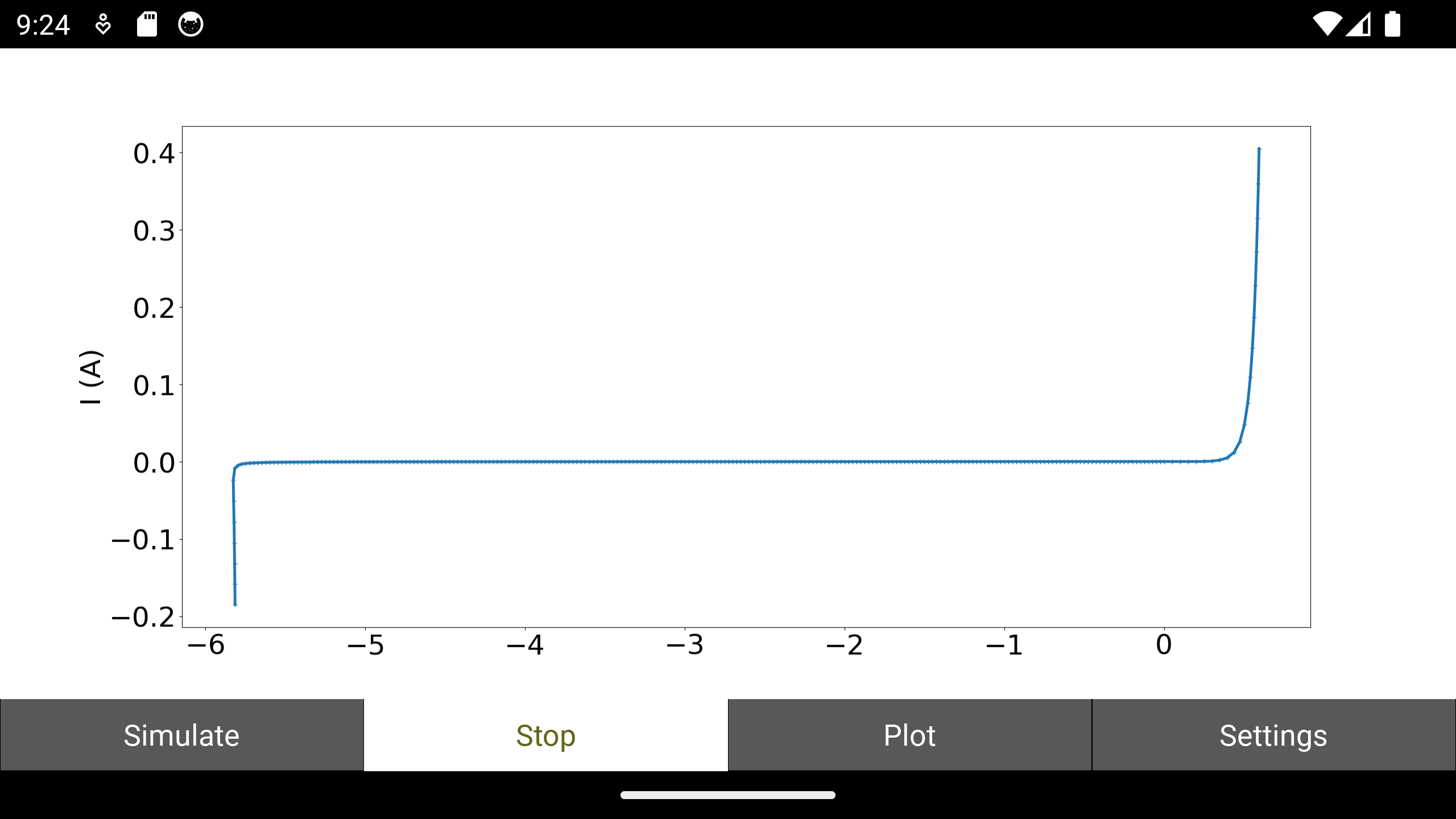[1] K. Wang et al.; Design and simulation of a novel 4H-SiC LGAD timing device; Radiation detection technology and methods; (2023) https://doi.org/10.1007/s41605-023-00431-y
[2] J. Lauwaert; Technology computer aided design based deep level transient spectra: Simulation of high-purity germanium crystals; Journal of Physics D: Applied Physics; (2022) https://doi.org/10.1088/1361-6463/ac34ad
[3] Q. Chen et al.; Analytical model for donor like Gaussian traps in organic thin-film transistor; Organic Electronics; (2021) https://doi.org/10.1016/j.orgel.2022.106464
[4] Q. Chen et al.; The Impact of Contact Position on the Retention Performance in Thin-Film Ferroelectric Transistors; Physica Status Solidi A; (2021) https://doi.org/10.1002/pssa.202100408
[5] L. Hulbert; Designing a Simulator for an Electrically-Pumped Organic Laser Diode; Master’s Thesis; (2019) https://doi.org/10.15368/theses.2019.60
[6] J. E. Sanchez and Q. Chen; Element Edge Based Discretization for TCAD Device Simulation; IEEE Transactions on Electron Devices; (2021) https://doi.org/10.1109/TED.2021.3094776
[7] J. Lauwaert; Fill Factor Loss in a Recombination Junction for Monolithic Tandem Solar Cells; ACS Appl. Energy Mater.; (2023) https://doi.org/10.1021/acsaem.3c00041
[8] J. E. Sanchez; DEVSIM: A TCAD Semiconductor Device Simulator; Journal of Open Source Software; (2022) https://doi.org/10.21105/joss.03898
[9] L. Rickert et al.; High-performance designs for fiber-pigtailed quantum-light sources based on quantum dots in electrically-controlled circular Bragg gratings; Optics Express; (2023) https://doi.org/10.1364/OE.486060
[10] L. R. Brennaman & A. J. Samin; Insights into the performance of InAs-based devices in extreme environments from multiscale simulations; Applied Physics A; (2023) https://doi.org/10.1007/s00339-023-06756-1
[11] M. D. K Jones et al.; Modelling Interfaces in Thin-Film Photovoltaic Devices; Frontiers in Chemistry; (2022) https://doi.org/10.3389/fchem.2022.920676
[12] R. Sellers et al.; fabrication and modeling study to reduce valence band offset in HgCdTe MWIR nBn photodetectors grown on silicon using superlattice barriers; Proc. SPIE PC12687, Infrared Sensors, Devices, and Applications XIII,; (2023) https://doi.org/10.1117/12.2677394
[13] TANG Zhenglai and CAO Bingyang ; Simulations of self-heating effects and the heat generation mechanisms in SOI-MOS devices; Microelectronics & Computer; (2023) https://doi.org/10.19304/J.ISSN1000-7180.2023.0630
[14] Kotecha et al.; Modeling Needs for Power Semiconductor Devices and Power Electronics Systems; IEDM (2019) (2019) https://doi.org/10.1109/IEDM19573.2019.8993449
[2] J. Lauwaert; Technology computer aided design based deep level transient spectra: Simulation of high-purity germanium crystals; Journal of Physics D: Applied Physics; (2022) https://doi.org/10.1088/1361-6463/ac34ad
[3] Q. Chen et al.; Analytical model for donor like Gaussian traps in organic thin-film transistor; Organic Electronics; (2021) https://doi.org/10.1016/j.orgel.2022.106464
[4] Q. Chen et al.; The Impact of Contact Position on the Retention Performance in Thin-Film Ferroelectric Transistors; Physica Status Solidi A; (2021) https://doi.org/10.1002/pssa.202100408
[5] L. Hulbert; Designing a Simulator for an Electrically-Pumped Organic Laser Diode; Master’s Thesis; (2019) https://doi.org/10.15368/theses.2019.60
[6] J. E. Sanchez and Q. Chen; Element Edge Based Discretization for TCAD Device Simulation; IEEE Transactions on Electron Devices; (2021) https://doi.org/10.1109/TED.2021.3094776
[7] J. Lauwaert; Fill Factor Loss in a Recombination Junction for Monolithic Tandem Solar Cells; ACS Appl. Energy Mater.; (2023) https://doi.org/10.1021/acsaem.3c00041
[8] J. E. Sanchez; DEVSIM: A TCAD Semiconductor Device Simulator; Journal of Open Source Software; (2022) https://doi.org/10.21105/joss.03898
[9] L. Rickert et al.; High-performance designs for fiber-pigtailed quantum-light sources based on quantum dots in electrically-controlled circular Bragg gratings; Optics Express; (2023) https://doi.org/10.1364/OE.486060
[10] L. R. Brennaman & A. J. Samin; Insights into the performance of InAs-based devices in extreme environments from multiscale simulations; Applied Physics A; (2023) https://doi.org/10.1007/s00339-023-06756-1
[11] M. D. K Jones et al.; Modelling Interfaces in Thin-Film Photovoltaic Devices; Frontiers in Chemistry; (2022) https://doi.org/10.3389/fchem.2022.920676
[12] R. Sellers et al.; fabrication and modeling study to reduce valence band offset in HgCdTe MWIR nBn photodetectors grown on silicon using superlattice barriers; Proc. SPIE PC12687, Infrared Sensors, Devices, and Applications XIII,; (2023) https://doi.org/10.1117/12.2677394
[13] TANG Zhenglai and CAO Bingyang ; Simulations of self-heating effects and the heat generation mechanisms in SOI-MOS devices; Microelectronics & Computer; (2023) https://doi.org/10.19304/J.ISSN1000-7180.2023.0630
[14] Kotecha et al.; Modeling Needs for Power Semiconductor Devices and Power Electronics Systems; IEDM (2019) (2019) https://doi.org/10.1109/IEDM19573.2019.8993449




